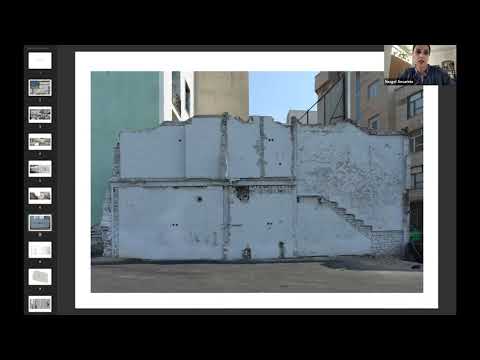
Media has been an inseparable part of production of architectural knowledge and practice. It’s role however, has changed historically from allegorical illustrations to analogical and heuristic devices. The tension between architecture imagined and architecture conceived is precisely the driving force for progression in the field. Architecture is no longer limited to built space; it is rather generated through various stimuli fostered by imagination, investigation, and projection. The actual politics and expressible fantasies are inevitable part of such a perpetual process. When the confines of the discipline are stretched so tight that cracks begin to show, new practices would emerge.
The Symposium aims to bring together researchers, architects and artists to explore the use of media and representation of space as a form of multi-scalar investigation, from architecture to the territory and the urban.
Nazgol Ansarinia is an Iranian artist. She graduated from the London College of Communication in 2001 before earning a master of fine arts at the California College of the Arts (CCA) in San Francisco in 2003. In her work, Ansarinia examines the systems and networks that underpin her daily life, such as everyday objects, routines, events, and experiences, and the relationship they form to a larger social context. Her projects represent ways of understanding the role of architecture in delineating interior and exterior spaces and private and public spheres. Ansarinia’s works are largely observational and technical in their scope, offering insight into the issues that are most pressing and urgent for today’s cities and the populations that inhabit them. Her recent exhibitions include: The Room Becomes a Street (2020); Fragile Frontiers: Visions on Iran’s in/visible borders (2019); Revolution Begins at Home (2019); The Spark is You: Parasol Unit in Venice (2019); and Fragments, Particles and the Mechanisms of Growth (2017).
Alessandra Covini studied in Milan and Lisbon and received her master’s degree in Architecture at the University of Technology in Delft (NL). Alessandra is the founder of Rotterdam-based Studio Ossidiana, an award-winning practice in architecture, design and research which she leads together with Giovanni Bellotti. Founded in 2015, the practice is always in search of new material expressions to translate visions into engaging spaces and objects. Playfulness, tactility and inclusivity play a major role in the studio’s projects: stories are told and objects are brought to life through materials and spaces that call for action, discovery and wonder. Working across multiple scales, Studio Ossidiana blurs the boundary between architecture, design, art, landscape, and urban strategies.
Alessandra is the winner of the Prix de Rome Architecture 2018, the oldest award for architects under the age of 35 in the Netherlands. Alessandra has taught and lectured at TU Delft, Rotterdam Academie van Bouwkunst, Piet Zwart Institute, KABK Den Haag, Rietveld Academy.
Miles Gertler studied architecture at the University of Waterloo and Princeton University. In addition to his independent projects in writing, sculpture, and image-making, Gertler is a Director at Common Accounts, an office for design inquiry that he founded with Igor Bragado in 2015. Their work in academia and architectural inquiry, construction, and large-scale art installations examines intersections of the body with spaces both online and IRL* and considers extra-architectural material that often passes below the radar of the discipline. He teaches at the University of Toronto’s Daniels Faculty of Architecture, Landscape, and Design, and serves on the Board of Directors at Mercer Union, a centre for contemporary art.
David Burns works in media and space. His current research examines the role of media in the historiographies of sites of nuclear colonialism. His PhD from the Centre for Research Architecture, Goldsmiths was concerned with the Woomera Rocket Range in South Australia, specifically the British nuclear weapons tests in the 1950s and 1960s at Maralinga. The dissertation was accompanied by an archive of found photography, drawings, court records, newsreels, scientific studies, and memorabilia combined with new photography and moving image work completed during fieldwork in South Australia. For two decades David has written and led transdisciplinary curricula in architecture, art, and design in universities in the United States, Australia, and the United Kingdom. He leads Media Studies at the Royal College of Art School of Architecture and was previously the Director of Photography and Situated Media at the University of Technology Sydney, an adjunct assistant professor at Carnegie Mellon University, and the Paul Rudolph Visiting Assistant Professor of Architecture at Auburn University. David is a co-founder, alongside Adam Kaasa and Thandi Loewenson, of the Fiction, Feeling, Frame research collective.